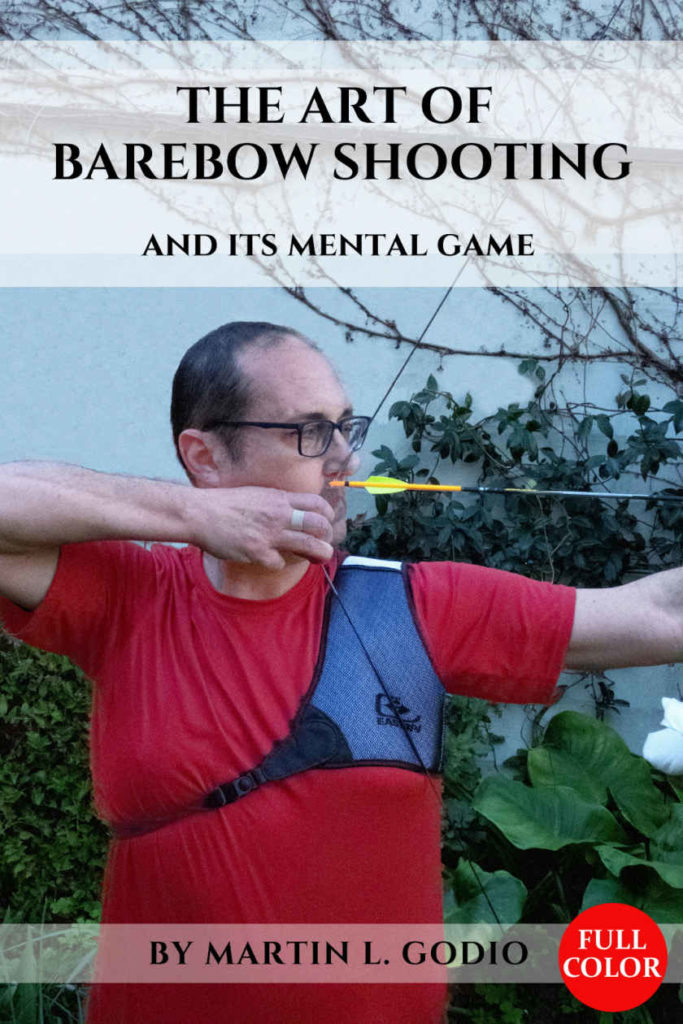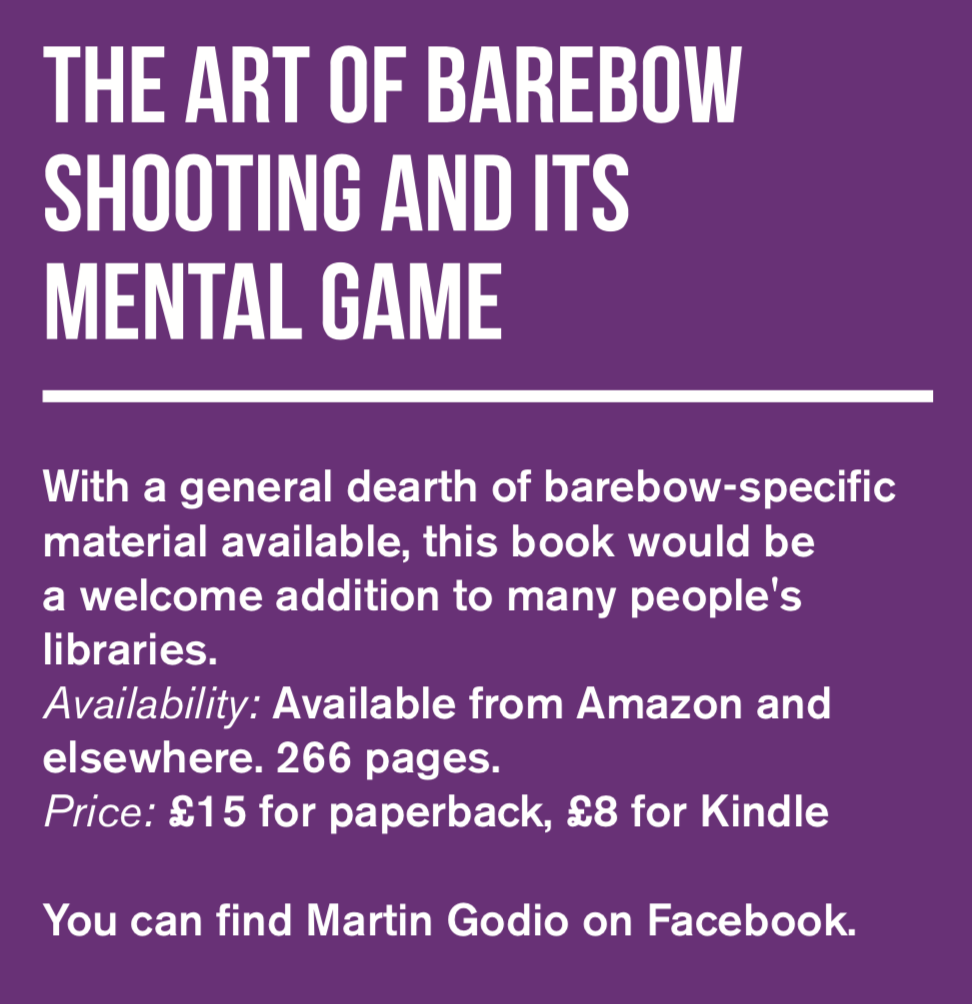Victoria Williams reviews a niche how-to barebow guide

When I was asked to review this book, The Art of Barebow Shooting And Its Mental Game, I was fully prepared to read yet another book written from the perspective of Olympic recurve archery adapted for barebow.
I expected I’d be reading through it feeling that much of the content just doesn’t fit with the reality of barebow archery. This has not been the case. Martin L. Godio is quite obviously an experienced archer and coach.
He tackles the particular challenges of barebow archery with depth and clarity and offers the reader solutions to issues facing them. (Godio is also the author of a book on stringwalking, and this book continues the work developed in that book.)
The book does not set out to teach you how to shoot any kind of bow. It assumes that you have already gained some proficiency in the basics and that you want to develop a technique that enables you to become better at hitting the gold.
The author mentions in the foreword that his new book cannot or should not replace a trainer and is therefore not a ‘classic’ textbook. It is more of a collection of experiences, ideas and knowledge that is aimed at shooters who already have a solid technical foundation. It suggests that you work with a coach to gain reasonable accuracy and use the advice given within the book “to help you decide how to shoot and to settle on your own shooting style”.
Although barebow archery is becoming more popular around the world there remains a lack of experienced, top-level coaches who can help you. I feel that the content of this book goes some way to addressing this need, particularly as a number of people the author has consulted are themselves very experienced international barebow archers; Martin Ottoson and Berti Ferruccio, for example.
In terms of content and the range of topics covered, you will find information on the practicalities of shooting barebow such as the biomechanics of an efficient shot, posture, string-walking, developing a shot sequence etc through to mental aspects such as aiming, visualisation, self-talk and strategies for overcoming target panic.
There is a section on training, both physical and mental training, which will provide the reader with some ideas how to set their own training plan and what aspects to include. Each of these topic areas are covered in some depth and I feel that the author puts across some of the less clinical, more ‘touchy-feely’ characteristics of barebow very well.
I found myself relating well to his descriptions of how a shot may feel, but he also acknowledges that archers may feel parts of the shot differently and so often offers an alternative approach.
Godio devotes himself extensively to detailed elements such as standing, shoulder posture, back tension and pull-out, each explained with photos, sketches and tables. Grip, stance, head position, pull-out phase, anchor and release are also examined in detail.
It’s been a long time since I have read a book looking at the physical aspects of shooting barebow. I suspect that like many others, I have felt that there is little left to learn from a book and that the only way to improve is to shoot more.
However, whilst reading, I did find myself wanting to pick up my bow and work through some of the things outlined to see if they might work better for me. This book has reminded me that it’s good to keep an open mind and if something isn’t working for you then there may be an alternative approach to try.
Ultimately, I think that this is a book for all barebow archers, from those fairly new to the discipline through to people like myself who have been shooting for many years and who perhaps sometimes need some wise words to get them moving in the right direction again.
It’s not a beautiful book that you might leave on your coffee table for all to admire. If I had to be picky, I’d say that perhaps the information within could have been better presented in terms of the photographs and formatting, and there are some editing errors – but none of this detracts from the valuable content.
This book provides numerous approaches and ideas that can make life easier with the problems that inevitably arise both with shooting and within the head.


